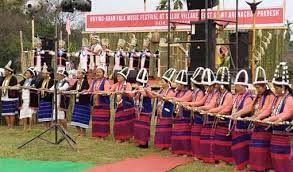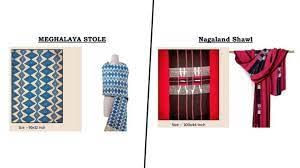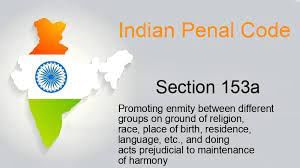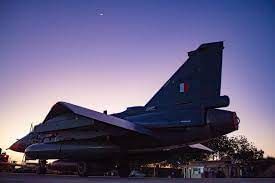UPSC Daily Current Affairs- 26th February 2023 | Current Affairs & Hindu Analysis: Daily, Weekly & Monthly PDF Download
| Table of contents |

|
| GS-I |

|
| GS-II |

|
| Safeguards against misuse |

|
| What is Free Trade Agreement (FTA)? |

|
| GS-III |

|
GS-I
Unying Festival
Why in News?
Recently, the Union Minister of Ports, Shipping & Waterways and Ayush attended the colourful Siang Unying Festival in Arunachal Pradesh.
About Unying Festival:
- The festival of Unying is celebrated to herald the season of cultivation, the beginning of the Adi community’s New Year, arrival of spring seasons as well as a great way to strengthen the bond among the community.
Key facts about the Adi community
- They are believed to have come from southern china in the 16th century.
- The Adi constitute a major group and inhabit the lower part of the Lower Dibang Valley district, especially the Roing and Dambuk areas of Arunachal Pradesh.
- They are experts in making cane and bamboo items.
- The Adis are basically dependent on agriculture. Both wet rice cultivation and shifting cultivation are practised.
- Solung (a harvesting festival where animal sacrifices and rituals are performed) and Aran ( a hunting festival where all the male members of the family go hunting) are two major festivals of the Adi tribes.
Source: PIB
What are Meghalaya stoles and Nagaland shawls?
Why in News?
Prime Minister recently gifted Meghalaya Stole and Nagaland Shawl to the German Chancellor, who is on a two-day visit to India.
About Meghalaya stoles:
- Meghalaya stoles were originally woven for the Khasi and Jaintia royalty, who considered them a symbol of their power and status.
- The stoles were worn during ceremonial occasions and festivals.
- They are made using locally sourced wool, and natural dyes.
- These stoles are famous for their warmth and softness.
- The designs used in the stoles reflected the royal family's beliefs, myths, and legends, and were a testament to their cultural heritage.
- They were used as a form of diplomatic gift-giving. The Khasi and Jaintia kings would often present these stoles to other rulers as a symbol of goodwill and respect.
About Nagaland shawls:
- These shawls are known for their vibrant colors, intricate designs, and the use of traditional weaving techniques, which have been passed down from generation to generation.
- One of the most striking features of the Naga shawl is the use of geometric and symbolic designs.
- The designs are inspired by the tribe's myths, legends, and beliefs, with designs having specific meanings and significance.
- The Naga shawl is made from locally sourced materials such as cotton, silk, and wool.
- The colors used in these shawls are symbolic. E.g., Red color symbolizes courage, while black represents mourning.
- The colors use natural dyes made from plants and roots.
- The shawls are often worn during festivals, ceremonies, and other special occasions as symbols of rank and lineage. They are also used as blankets, seat coverings, and even as bags.
- The shawls are known for their durability and can last for several generations.
Source: The Hindu
GS-II
Section 153A: its use and misuse
Why in News?
A politician was recently arrested under Section 153A of IPC for the alleged use of objectionable words against the Prime Minister.
Section 153A: What the law says
- Section 153A of the Indian Penal Code (IPC) penalises “promoting enmity between different groups on grounds of religion, race, place of birth, residence, language, etc., and doing acts prejudicial to maintenance of harmony”.
- This is punishable with imprisonment up to three years, or with fine, or with both.
- The provision was enacted in 1898 and was not in the original penal code.
- At the time of the amendment, promoting class hatred was a part of the English law of sedition, but was not included in the Indian law.
Charges laid for remarks against PM
The FIR mentioned the use of Sections-
- 153B(1) (Making imputations, assertions prejudicial to national integration);
- 295A (Deliberate and malicious acts, intended to outrage religious feelings of any class by insulting its religion or religious beliefs);
- 500 (Defamation); and
- 504 (Intentional insult with intent to provoke breach of the peace).
Conviction rates under Section 153A
- Data from the National Crime Records Bureau (NCRB) show that the rate of conviction for Section 153A is very low.
- In 2020, 1,804 cases were registered, six times higher than the 323 cases in 2014.
- However, the conviction rate in 2020 was 20.2%, suggesting that the process often becomes the punishment.
Issues with the law
- Hate speech laws have been invoked under regimes of all parties to crack down on criticism of public functionaries and to arrest individuals.
- The invocation of Section 153A is often criticized for restricting free speech and misusing the legal processes for political purposes.
Safeguards against misuse
- Given that the provisions are worded broadly, there are safeguards against its misuse.
- For example, Sections 153A and 153B require prior sanction from the government for initiating prosecution.
- But this is required before the trial begins, and not at the stage of preliminary investigation.
- To curb indiscriminate arrests, the Supreme Court laid down a set of guidelines in its 2014 ruling in Arnesh Kumar v State of Bihar.
- As per the guidelines, for offenses that carry a sentence of fewer than seven years, the police cannot automatically arrest an accused before investigation.
Source: Indian Express
Free Trade Agreements (FTAs) and its Geoeconomic Implications
Why in News?
With a projected 7 per cent growth for the ongoing year, the Indian economy is set to register the highest growth rate across all the major economies of the world. Moreover, Indian growth story for the years to come will be shaped by the unfolding geoeconomic and geopolitical forces that will sustain its consumption-driven-growth phenomenon, further driving investment and production.
What is Regional Trade Agreement (RTA)?
- RTA is a treaty between two or more countries in a particular region that aims to reduce or eliminate trade barriers, such as tariffs and quotas, to facilitate increased trade between the member countries.
- RTAs can take various forms, such as Free Trade Agreements, Customs Unions, Common Markets, and Economic Unions.
What is Free Trade Agreement (FTA)?
- FTA is a specific type of RTA that eliminates tariffs and other trade barriers on goods traded between the member countries.
- FTAs may also include provisions on trade in services and investment, but they are primarily focused on reducing tariffs on goods.
India’s tryst with RTAs/ FTAs
- From 2021, there has been a sudden spurt in signing bilateral trade agreements by India.
- The India-Mauritius CECPA in 2021, India-UAE CEPA and Australia-India ECTA in 2022, are some examples.
- Talks on these grounds with the UK and Canada are in advanced stages,
- Serious intentions on inking FTAs with the EU and Israel have also been expressed.
Geoeconomic Implications
- India-UAE Comprehensive Economic Partnership Agreement (CEPA):
- Western QUAD: The India-UAE CEPA strengthens Indian commitment with I2U2 (i.e. Israel, India, UAE and the United States), also referred to as the western QUAD, a regional force convened in October 2021.
- Access to the western neighbours: This agreement provides India an access to the western neighbours that can facilitate the process of negotiating trade agreements in the absence of China.
- Advantage for India-GCC FTA: It puts India a step ahead towards having an India-GCC (Gulf Cooperation Council) FTA, thereby ameliorating its relations with the gulf nations.
- Boost to economy: On the economic front, the trade pact is envisioned to almost double bilateral commodity trade by 2027, increase service trade and generate 10 lakh jobs in labour-intensive sectors.
- The Australia-India Economic Cooperation and Trade Agreement (ECTA)
- The Australia-India ECTA boosts Australia-India ties on various fronts, including geopolitical one.
- Once a more comprehensive FTA, i.e. the CECA (Comprehensive Economic Cooperation Agreement) gets inked between the two nations, various other areas such as services, investments, government procurement and intellectual property will be covered.
- Even within the QUAD, the strong relationship between Australia and India will help in creating an Australia-India niche.
- Indo-Pacific Economic Framework for Prosperity (IPEF)
- The IPEF, an economic initiative driven by the Biden administration with a total of fifteen participating member nations, presents the massive potential to ink a regional trade agreement and create a trade bloc without China.
- If that happens, India, being a member, will definitely be a beneficiary.
How FTA’s will lead to Consumption-driven growth?
FTAs boosting consumption demand, this can happen through two avenues.
- Increase consumption choice: The FTAs will enable cheaper imports of commodities and will increase the consumption choice.
- Multiplier effect on domestic incomes: The second is that the direct multiplier effect of enhanced trade and increased employment will have its multiplier effect on domestic incomes.
- Increase purchasing power: Both the forces combined together will increase the purchasing power of the consumers, and increase consumption demand.
Factors that put India at Competitive Advantage
- India’s demographic dividend: India’s competitive advantage lies with its comparative demographic dividend over China. The under-30 population in India, being about 52 percent, compares favorably with around 40 percent for China, which is going to shrink faster over the next decade. The young population is expected to boost consumption, savings and investments, and will drive consumption-led-growth.
- Low wage and thereby Cost-competitiveness: Second, as per 2019 estimates, the average Indian wage is 10% of that of China, thereby rendering relative cost-competitiveness to the products manufactured in India as compared to China. This is already enticing foreign investment.
- National Infrastructure Pipeline: India’s massive emphasis on physical infrastructure through projects like the National Infrastructure Pipeline (NIP) for FY 2019-25 and transport sector growth will reduce the transaction costs of doing business.
- Reforms in business environment: India has been working extensively to reform its business environment through effective policy practices be it through measures like Production Linked Incentive (PLI) scheme, or bringing about substantial changes in its tax regimes, liberalization of the Foreign Direct Investment (FDI) policies in manufacturing, etc.
- Digital literacy: It entails digital literacy and English language skills. On both counts, the Indian youth is way ahead of China.
- Strong Indian Diplomacy: Indian diplomacy is also playing an important role with trade agreements being used as important instruments of diplomacy. This is true for the UAE, Australia, and the partnerships like QUAD (or even IPEF), and I2U2.
Conclusion
No doubt, FTAs are emerging as important tools for economic diplomacy for India for deeper levels of engagement with friendly nations. At the same time, the FTAs are two-level games for India. At the international level, it has to negotiate with the concerned nation/s, while at the domestic level it has to negotiate with various contending constituencies. Yet, FTAs’ role as a growth driver through trade and investment cannot be ignored. In addition, with India becoming the most populous nation in the world, surpassing China in January 2023, it presents itself as the largest product and factor market to the global community.
Source: The Hindu
GS-III
Exercise Desert Flag VIII
Why in News?
Indian Air Force is participating in Exercise Desert Flag VIII 110 which is hosted by the United Arab Emirates.
About Exercise Desert Flag VIII:
- It is an annual multinational large-force employment warfare exercise hosted by the UAE Air Force.
- The IAF would be participating with five Light Combat Aircraft, LCA Tejas and two C-17 Globemaster III aircraft.
- Participants: Air Forces from UAE, France, Kuwait, Australia, the UK, Bahrain, Morocco, Spain, the Republic of Korea, and the USA would also be participating.
- The exercise is scheduled from the 27th of February to the 17th of March.
India’s Joint Military Exercises with the UAE:
- With the UAE, India has In-UAE BILAT (bilateral naval exercise) as well as Desert Eagle-II (bilateral air force exercise).
Source: News on Air
Indian Renewable Energy Development Agency (IREDA)
Why in News?
IREDA is planning to establish an office in Gujarat's GIFT City to finance Renewable Energy projects in foreign currency.
About Indian Renewable Energy Development Agency (IREDA):
- Nodal Ministry: The Ministry of New and Renewable Energy (MNRE).
- It was set up as a specialized non-banking finance agency for the renewable energy sector.
- IREDA plays a key role in renewable energy project financing which gives confidence to the financial institutions/banks to lend in the sector.
Key facts about the GIFT City
- The Gujarat International Finance Tec-City (GIFT City) is India’s first and only International Financial Services Centre (IFSC) where banks, stock exchanges and financial services firms have set up their global operations.
- It consists of a multi-service Special Economic Zone (SEZ), which houses India’s first International Financial Services Centre (IFSC) and an exclusive Domestic Tariff Area (DTA).
What is IFSCA?
- It is a statutory authority established under the International Financial Services Centres Authority Act, 2019.
- Mandate: To develop and regulate the financial products, financial services, and financial institutions in the International Financial Services Centres (‘IFSC’).
- Before the establishment of IFSCA, the domestic financial regulators, namely, RBI, SEBI, PFRDA and IRDAI regulated the business in IFSC.
- GIFT-IFSC is the maiden IFSC in India.
- The International Financial Services Centres Authority consists of nine members, appointed by the central government.
- Term: All members of the IFSC Authority will have a term of three years, subject to reappointment
Source: The Hindu
Financial Stability Board (FSB)
Why in News?
India recently asked the IMF and Financial Stability Board (FSB) to jointly prepare a technical paper on crypto assets.
About Financial Stability Board (FSB):
- FSB is an international body that monitors and makes recommendations about the global financial system.
- It was established in April 2009 after the G20 Summit in London as the successor to the Financial Stability Forum.
- Mandate:
- To coordinate at the international level the work of national financial authorities and international standard-setting bodies and to develop and promote the implementation of effective regulatory, supervisory, and other financial sector policies.
- The FSB, working through its members, seeks to strengthen financial systems and increase the stability of international financial markets.
- Headquarters: Basel, Switzerland.
- The board includes all G20 major economies.
- The FSB consists of 68 member institutions. It comprises several central banks, ministries of finance, and supervisory and regulatory authorities from 25 jurisdictions, as well as 10 international organizations and six Regional Consultative Groups (RCGs).
- Framework:
- The Plenary, which serves as the sole decision-making body.
- The Steering Committee, which takes forward operational work in between Plenary meetings.
- Three Standing Committees, each with specific but complementary responsibilities.
- The FSB’s decisions are not legally binding on its members.
- India and FSB: India is an active Member of the FSB, having three seats in its Plenary represented by Secretary (Dept of Economic Affairs), Deputy Governor-RBI, and Chairman-SEBI.
About International Monetary Fund (IMF):
- It is a United Nations (UN) specialized agency founded at the Bretton Woods Conference in 1944.
- Objective: To secure international monetary cooperation, to stabilize currency exchange rates, and to expand international liquidity (access to hard currencies).
- Headquarters: Washington D.C, USA.
- Currently, it has 190 member countries.
- The IMF's resources mainly come from the money that countries pay as their capital subscription (quotas) when they become members.
- Each member of the IMF is assigned a quota based broadly on its relative position in the world economy.
- Functions:
- The IMF provides loans—including emergency loans—to member countries experiencing actual or potential balance of payments problems.
- It provides technical assistance and training to governments, including central banks, finance ministries, revenue administrations, and financial sector supervisory agencies.
|
38 videos|5293 docs|1118 tests
|
FAQs on UPSC Daily Current Affairs- 26th February 2023 - Current Affairs & Hindu Analysis: Daily, Weekly & Monthly
| 1. What is the significance of the GS-I, GS-II, and GS-III in the UPSC exam? |  |
| 2. How can I prepare for the GS-I paper in the UPSC exam? |  |
| 3. What are the key areas covered in the GS-II paper of the UPSC exam? |  |
| 4. How can I improve my performance in the GS-III paper of the UPSC exam? |  |
| 5. Are there any specific strategies to crack the UPSC exam's General Studies papers? |  |






















